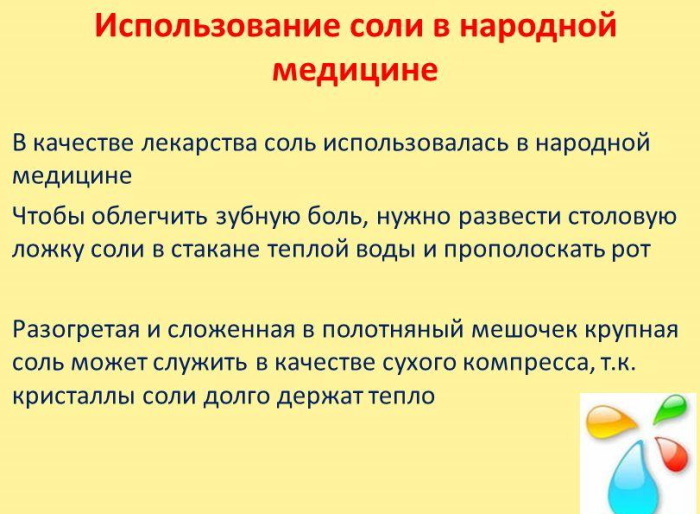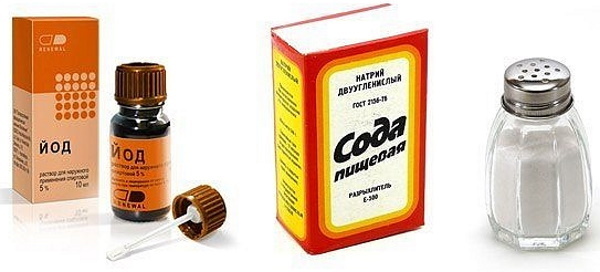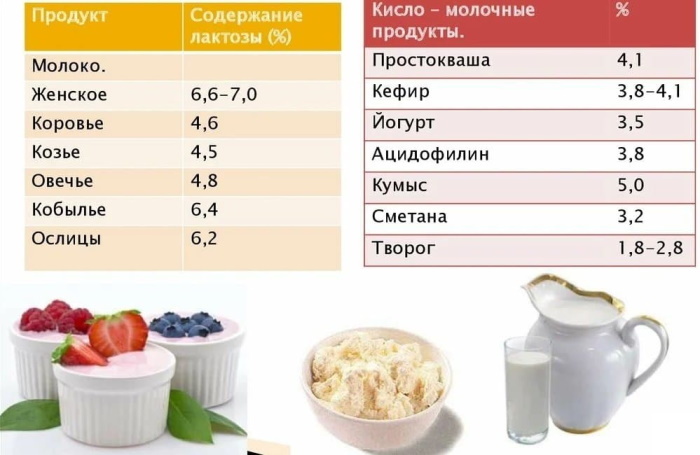Content
- Why is it useful to rinse your mouth with soda-salt solution
- Contraindications to rinsing
- What salt is worth taking for rinsing
- Why is salt replaced with sea salt
- Rules for preparing a solution, how to rinse your mouth correctly
- Saline recipes and their uses
- Saline solution
- With sea salt
- Salt with baking soda
- Salt with soda and iodine
- With vodka
- With herbs
- With hydrogen peroxide
- Salt + baking soda rinse video
For inflammation of the teeth or gums, it is often used as an effective folk remedy. rinsing with baking soda and salt. The proportions for the preparation of the solution may be different. The method is based on the unique antibacterial and anti-inflammatory properties of the recipe components.
Why is it useful to rinse your mouth with soda-salt solution
Many centuries ago, when dental practice did not exist, only saline solutions or lotions with plant extracts were used for inflammation of the oral cavity. Today, all experienced dentists are advised to perform regular rinsing of the mouth area. Saline and soda solutions are used to relieve inflammation after dental procedures. This effective remedy is great for treating inflammation in children, as strong medications can be harmful to the child's body.
Rinsing the tooth with baking soda and salt (the proportions may vary) does not cure dental diseases, but effectively relieves symptoms. This should be taken into account when carrying out the procedure. Gargles can be part of a comprehensive treatment prescribed by a specialist. As a preventive measure, you can use this tool yourself.
Rinsing is a symptomatic technique, it helps with inflammation, as well as in the presence of symptoms and diseases such as:
- uninfected gum disease;
- mechanical damage to the oral cavity;
- caries;
- the development of gingivitis, periodontal disease;

- swelling of the gums;
- bleeding;
- prophylaxis after surgery.
To relieve the symptoms of these conditions, soda and saline solutions are used, but iodine, essential oils and other components are used as additional ingredients. The practice of using herbal decoctions is also common.
The main actions of soda-salt formulations:
- active antimicrobial action;
- relief of inflammatory processes;
- reducing pain;
- getting rid of tartar or plaque.
The presence of indications does not mean that you need to thoughtlessly prepare a soda-salt solution and rinse your mouth when you want. There are special recipes for cooking, they are used with the obligatory observance of the requirements for the procedures.
Contraindications to rinsing
There are also contraindications to the use of soda and salt for rinsing your teeth:
- children under 3 years old;
- diagnosed cranial injury;
- brain diseases;
- dysfunction of the thyroid gland.
Most often, saline mouthwashes are not limited as long as they are prepared with the rules and requirements for the quality of ingredients in mind. During the procedure, it is not recommended to swallow a lot of liquid, it is intended for rinsing, but not for drinking.
What salt is worth taking for rinsing
The properties of salt in a solution for the oral cavity were discovered as early as the 18th century. scientist Anthony Van Leeuwenhoek.

He formulated the main qualities of common salt:
- internal connections contribute to the release of excess fluid from the affected area;
- salt disinfects tissues;
- salt disinfects the most difficult to reach areas.
The mucous membrane of the oral cavity actively absorbs useful trace elements, in addition, when using saline solutions there are no side effects in the form of allergic reactions and injuries mucous membranes.
Why is salt replaced with sea salt
Dentists advise taking baths or rinsing sore teeth with sea salt solutions. Sea salt contains an increased amount of iodine, a trace element that has excellent antimicrobial properties. Sea salt strengthens the tooth enamel and reduces the risk of infection.
Rules for preparing a solution, how to rinse your mouth correctly
Rinsing the tooth with soda and salt, the proportions for which depend on each specific recipe, are carried out according to a certain scheme. Only if all the rules are followed can you expect a result.
Step-by-step instruction:
- First, prepare a warm rinse solution.
- Brush your teeth before rinsing to remove food particles.
- A saline solution is drawn into the mouth, vibrations are created with the help of the movement of the cheeks and tongue.
- After a few seconds, the water is spit out, a new portion of the solution is collected.
To get rid of purulent accumulations, relieve pain and inflammation, rinse every hour. After rinsing, do not drink clean water for 10-15 minutes.
Saline recipes and their uses
Saline solution with soda is prepared immediately before rinsing the teeth, observing the proportions. The water is made warm, high-quality ingredients are selected. The solution can be prepared with the addition of auxiliary components, this will increase the efficiency and provide a lasting result.
Saline solution
The simplest recipe is a saline solution, which is used for gum disease and toothache. The solution is also effective after dental procedures and surgery, it promotes healing of injured surfaces and soothes damaged nerves.

To prepare a simple saline solution, you will need 1 tbsp. warm water and 2 tsp. l. salt. The peculiarity of the preparation of such a solution is the complete dissolution of crystals in water and the acquisition of a special salty taste. After thorough stirring, the saline solution is used for rinsing once every hour.
With sea salt
To prepare a recipe with sea salt, you will need 1 tsp. l. salt and 250 ml. warm water. In addition to the anti-inflammatory and antimicrobial action, the sea salt solution can be used as a preventive measure against dental plaque or as a gentle, enamel-strengthening agent. Sensitive teeth are rinsed with a solution of 150 ml. water and 0.5 tsp. l. salt after every brushing of your teeth.
Salt with baking soda
Rinsing the tooth with soda and salt (the proportions for which must be accurate) are prescribed for gum disease or moderate pain. In addition, soda-salt solution is perfect for those who have been diagnosed with stomatitis or periodontitis. For cooking in 1 tbsp. warm water (standard - 200 ml) is stirred for 1 tsp. l. soda and 1.5 tsp. l. salt. Soda-salt solution caresses the teeth after brushing the teeth.
The recipe is applied after tooth extraction. The formed hole is soaked with a swab abundantly moistened with soda-saline solution. Baking soda and salt can help heal wounded tissue and treat possible symptoms of infection. Saline and soda solutions with iodine are traditionally used to treat diseases of the larynx, nasopharynx and teeth.

These compounds have distinctive properties:
- relieve inflammation in the oral cavity;
- remove deposits;
- relieve pain;
- prevent the spread of microorganisms;
- activate regenerative processes in tissues.
The effectiveness of the procedure depends on compliance with the basic rules:
- before rinsing, teeth are cleaned using a toothbrush and toothpaste to remove food debris;
- you cannot use a hot or too cold solution, the water temperature should be as comfortable as possible;
- use only a freshly prepared solution for rinsing;
- when rinsing, the liquid is not swallowed;
- the procedure should not be too short or lengthy, it lasts at least 5 minutes, maximum 7-8 minutes.
Salt with soda and iodine
In this composition, each ingredient is responsible for separate actions. Salt acts as an antiseptic of natural origin, soda provides an antimicrobial effect, iodine strengthens tooth enamel and prevents the growth of harmful microorganisms.
For preparation in a glass of water (standard - 200 ml) take 0.5 tsp. l. soda and salt and 1-2 drops of iodine. The solution is thoroughly mixed. The result is a light amber liquid without salt crystals. The only sediment in the glass may be soda powder in the form of fine dust, which remains on the bottom of the glass after rinsing.
When using this solution, you should remember the precautions. Do not rinse if small ulcers do not heal in your mouth. Do not repeat rinsing with iodine once an hour, as is done when using a soda-salt solution. For treatment, three times a day is sufficient, after each meal.
If the doctor prescribes rinsing after tooth extraction, then the movements during the procedure should be soft, smooth and accurate. There is no need to purposefully wash off the blood clot that forms on the hole in the place of the extracted tooth.

It is impossible to cure serious dental disorders by rinsing with the addition of iodine to saline or soda solution. This composition only relieves inflammation and provides local symptomatic treatment, but does not completely remove the problem.
With vodka
An alcoholic tincture of calendula is often used as an anti-inflammatory agent, but some traditional healers advise preparing a soda-salt mixture with the addition of vodka on their own. This solution is unsafe, it is contraindicated in cases where a person has alcohol intolerance.
The mechanism of action of this recipe is based on the properties of the components:
- salt is a natural antiseptic;
- soda - a blocker of bacterial growth in the oral cavity;
- vodka is a powerful antiseptic, protector against infections.
Only a high-quality certified product is used for cooking. First in 200 ml. warm water is dissolved 1 tsp. l. soda. Then add 0.5 tsp. l. salt. Only after complete dissolution of the bulk components add 4-6 drops of vodka.
With herbs
In some cases, the addition of plant raw materials to the main composition of the components enhances the anti-inflammatory effect and improves overall well-being. There are 3 herbal extracts that do the job. Despite the inclusion of anti-inflammatory components in the general category, each element has significant differences.
| Additional component | Properties |
| chamomile | Beneficial flavonoids and essential oils provide antiseptic and antibacterial effects. |
| Oak bark | An ingredient providing a strong astringent effect. With the help of oak bark, it is customary to stop bleeding, relieve irritation of the mucous membrane. Oak bark is often used to stop bleeding. |
| Sage | Sage essential oils prevent the development of inflammation, eliminate pathogenic bacteria from the surface of the mucous membrane. |
Gargles are prepared in different ways. First, they make solutions based on salt and soda, alternate procedures with herbal rinses. In another case, the solutions are mixed and local baths are carried out or lotions are made.
A baking soda solution followed by a sage rinse helps draw pus out of the internal gingival flux.
- From 200 ml of water, 1 tsp. l. soda and 1 tsp. l. soda, prepare a warm rinse, carry out the procedure in accordance with the rules.
- 200 ml of boiling water is poured over 1 bag of sage chemist's, infused under the lid for 15 minutes, then filtered, diluted with cool water to a comfortable temperature.
- Sterile gauze is impregnated with herbal infusion, rolled up in the form of a tampon or tourniquet and applied to the inflamed gums.
- The procedures are repeated every 2-3 hours.
If purulent masses as a result of the manipulations begin to leave the mucous membrane, then the mouth is additionally rinsed with soda or saline solution. This eliminates the risk of re-infection and infection inside healthy teeth.
A similar rinse with chamomile is used in cases where it is necessary to remove the inflammatory process. Chamomile teas work as strong antiseptic compounds and provide a good anti-inflammatory effect.
Mouth baths with salt and soda can be alternated with rinses with St. John's wort, Kalanchoe, and calendula. The recipes are similar in cooking techniques and can be used an unlimited number of times. An intolerance to the herbal component may become a contraindication.
Another alternating treatment option is to massage the gums with salt followed by an herbal rinse. This technique helps to get rid of pain after installing or removing dentures, after brushing teeth from calculus and other dental procedures.
The toothbrush is slightly moistened with warm water, then immersed in fine salt and begin to massage the gums with a toothbrush, gently pressing in the center. First, massage is done for the gums of the lower jaw, then it is repeated for the gums of the upper jaw.
After the salt massage, the mouth is rinsed with warm infusion of chamomile or sage. In addition to the antiseptic and anti-inflammatory effect, this technique soothes the gums, relieves pain and removes irritation.
With hydrogen peroxide
Rinsing the tooth with soda and salt, the proportions for which depend on the purpose of use, is often used not only for medicinal purposes, but also as a prophylaxis. For example, adding hydrogen peroxide to a standard recipe helps whiten tooth enamel.
This recipe is also used to eliminate tartar and bad breath. Dentists do not recommend doing home whitening, so as not to completely destroy the tooth enamel, but due to its cheapness and availability, it is often used, despite the warnings.
Hydrogen peroxide really helps to brighten the enamel of the teeth, but at the same time it increases sensitivity and provokes a decrease in immune mechanisms. After applying this method, it is necessary to take breaks so that the protective reactions inside the oral cavity can be restored.
To prepare the solution, hydrogen peroxide 3% is used, which is sold in a pharmacy. For 2 parts of water, take 1 part of peroxide, add several grams of salt and soda, mix thoroughly.
The resulting solution is rinsed with teeth, then brushed with a soft toothbrush with the usual paste. The procedure is repeated daily for several weeks, then a break is taken. The first results can be seen after a series of 14-16 rinses. Tooth enamel becomes an order of magnitude lighter, and tooth sensitivity may occur when eating hot or overly cold foods or drinks.
When using saline and soda solution with the addition of hydrogen peroxide, you should follow the rules and be aware of the contraindications:
- do not swallow liquid;
- the prescription is contraindicated in pregnant women and children under 15 years of age;
- you should not use this method for people with particularly sensitive teeth and gums;
- you cannot use this recipe if your mouth has wounds, cracks, or ulcers;
- rinsing with hydrogen peroxide is strictly prohibited for people with diagnosed diseases of the stomach or intestines;
- for bleaching, use only a 3% hydrogen peroxide solution, but not stronger concentrates;
- you cannot use this tool if there are dentures or braces in your mouth;
- you cannot keep peroxide in your mouth for more than 5-6 seconds;
- after bleaching, it is not recommended to eat earlier than 30 minutes after rinsing.
If it is necessary to whiten one of the areas, use a different method. 3% hydrogen peroxide is applied to the tooth with a cotton swab, left for a few minutes, then brushed with a soft brush and rinsed with a traditional saline solution with the addition of soda.
Salt and soda are natural antiseptics. They are great for preparing tooth rinsing solutions. For each individual recipe, certain proportions are maintained. When carrying out the procedure, you must follow the rules in order to get the maximum result. Gargling helps relieve inflammation, relieve pain symptoms, and can also be used as a preventive measure.
Salt + baking soda rinse video
Perfect teeth. Salt + Soda:



